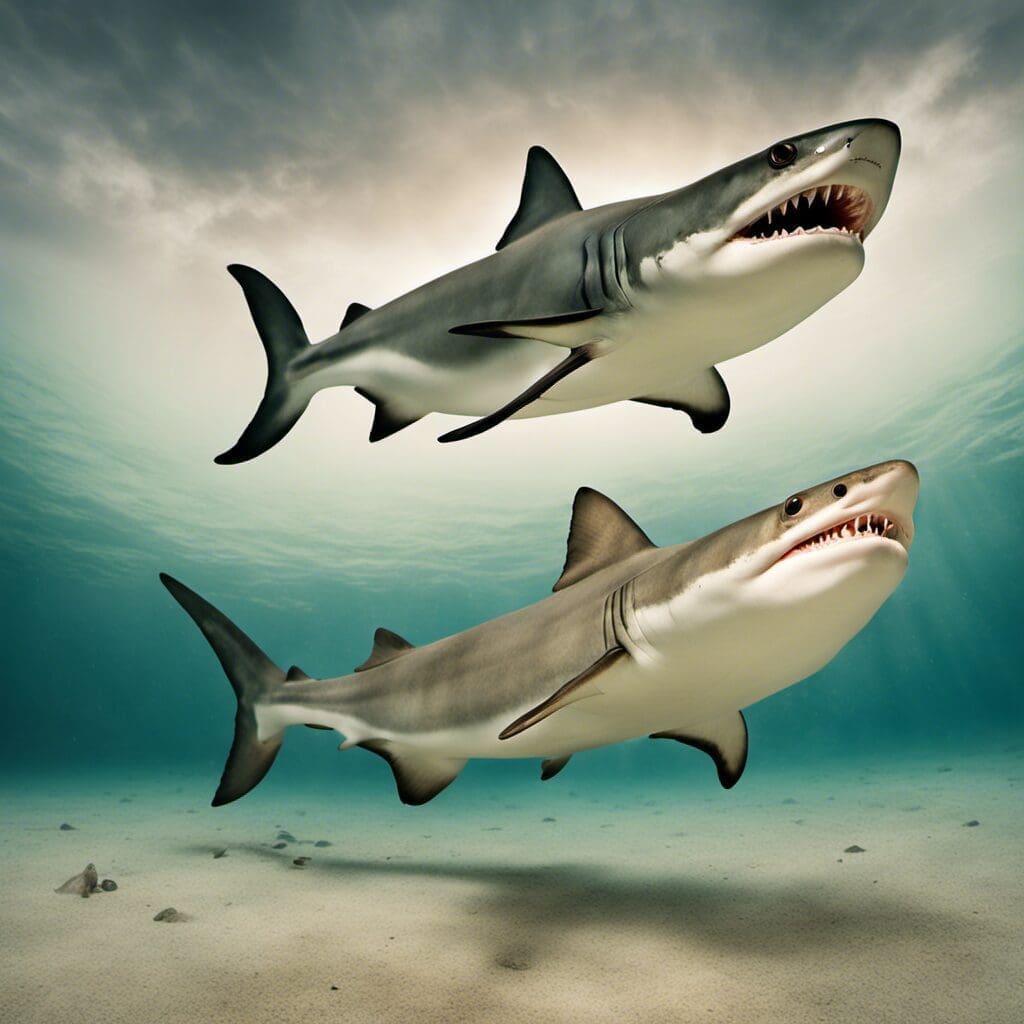Introduction
The Bonnethead Shark, scientifically known as Sphyrna tiburo, belongs to the family Sphyrnidae. It is the smallest member of the hammerhead shark family and has a distinctive, shovel-shaped head.
Conservation Status
The International Union for Conservation of Nature (IUCN) categorizes Bonnethead as a species of “Least Concern”. They are not generally targeted for fishing, but are sometimes caught as bycatch and are also exploited in the recreational fishing sector. Conservation efforts for this shark species are focused around the minimization of bycatch and sustainable fishing practices.
Statistics
| Length (Average) | Weight (Average) | Average Lifespan |
|---|---|---|
| 3.3 ft (1 m) | 11.5 lb (5.2 kg) | 8-12 years |
| Length (Range) | Weight (Range) | Other stats |
| 1.5-5.2 ft (0.45-1.6 m) | 6-24 lb (2.7-10.8 kg) | Gestation Period: 4-5 months |
Distribution
The Bonnethead Shark inhabits the Western Atlantic and Eastern Pacific oceans. Its distribution extends from New England, USA, to southern Brazil and from Southern California, USA, to Ecuador. This shark species is highly migratory, moving towards warmer waters during colder months.
Habitats
Bonnethead Sharks prefer warm, shallow coastal waters. They can be found in depths ranging from 0-80m, and they favour the temperature range of 70-80°F (21-27°C).
When and Where to See
For observing Bonnetheads in their natural habitat, look for them in warmer months in the Northern Hemisphere’s coastal waters between May and October. During the day, they are most active in the hours around dawn and dusk.
Best Fishing Locations
Finding bonnetheads can be quite a rewarding experience for fishing enthusiasts. Some top locations include:
- Florida Keys, USA
- Outer Banks, North Carolina, USA
- Chesapeake Bay, Virginia, USA
- Galveston Bay, Texas, USA
- Biscayne Bay, Florida, USA
- San Carlos Bay, Florida, USA
- South Padre Island, Texas, USA
- Teacapán Estuary, Mexico
- Gulf of Guayaquil, Ecuador
- Santa Marta Bay, Colombia
In general, look for them in shallow, warm coastal waters near the surface, especially around seagrass beds, mangroves, and coral reefs.
How to Catch
Preferred bait includes crustaceans, particularly crabs, and shrimp, while others may respond well to cut fish and squid. Most fishing techniques are effective, including fly fishing, trolling, and bottom fishing. They are most active around dawn and dusk.
Identification Guide
Bonnetheads are easily identified by their unique hammer-like head which is more rounded or bonnet-shaped than other hammerhead species. They possess a grayish-brown body with lighter undersides. Unlike many other sharks, bonnetheads have smaller mouths and teeth.
Culinary
In culinary applications, Bonnethead Sharks have a mild, sweet taste with a firm texture. They are most commonly broiled, grilled, or pan-fried. Before cooking, it’s important to properly clean and skin the shark.
Additional Information
Bonnetheads feed mainly on crabs, shrimp, and small fish. They are known to practice mating rituals involving complex dances. Potential threats to Bonnetheads include commercial fishing bycatch and habitat destruction. They do not have any significant historical or cultural significance.
References and Further Reading
- Florida Museum – Sphyrna Tiburo
- NOAA Fisheries – Bonnethead Shark
Remember to always research thoroughly and respect wildlife laws and conservation efforts when planning a trip to look for or fish these unique creatures

